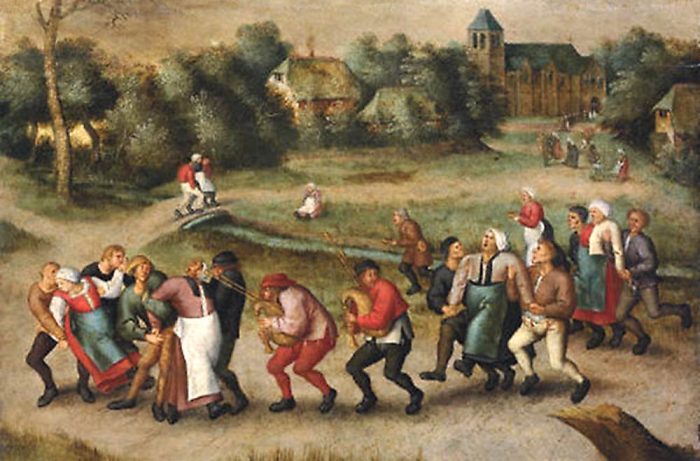I’ll tell you a story about ergot. In my spare time at university I read a book (The Day of St. Anthony’s Fire by John Grant Fuller Jr) about the 1951 Pont-Saint-Esprit ergot poisoning.
Ergot contains a mass of compounds, some of which act like LSD and some of which have other effects on the body.
There have been reports throughout history of mass poisoning with ergot.
A 2016 article in the Smithsonian refers to an incidence of St John’s dance (another name for St. Anthony’s Fire) that affected a village in Aachen in 1374 where the villagers danced endlessly and uncontrollably.
Breugel painted the annual procession of people affected by St John’s Dance on their pilgrimage to be cured at the church at Molenbeek.
St John’s Dance, or St. Anthony’s Fire, are thought to be incidences of ergotism.
Hundreds of people were affected in the 1951 outbreak at Pont-Saint-Esprit in France. Some died, some had gangrenous limbs, some went crazy, and some survived intact.
I remember a sentence near the end of the book where one of the outsiders who came to the village after the outbreak described the villagers as moving together like a flock of geese.
That’s got a science fiction sound to it – that the villagers were somehow telepathically tied to one another. Or perhaps they were simply shocked and came together as survivors of a mutual tragedy.
You may wonder how an incident like this could go on for days and weeks in the 20th century without the outside world quickly arriving to intervene and help people.
This was an isolated village in rural France in 1951, not long after the Second World War. It happened.
Ergot
A friend and I used to cycle from the university to a nature reserve.
One summer’s day we stopped on a small country road and sat back on the grass by a field. I started to tell her about The Day of St. Anthony’s Fire, the book I was reading, and while I was telling her I saw that there was rye growing around the edges of the field.
It may have been the previous year’s crop that had hung on and sprouted again. Or it may have been there for years, stubbornly refusing to disappear.
I reached back behind my head to take an ear of rye to explain how ergot – Claviceps purpurea fungus – grew inside and over the ear of rye.
I looked at what I had picked and one of the ears was a large, dark purple, curved mass of ergot.
We looked for other ears similarly infected with the fungus. Nothing. Never found another one.
I kept the ear in a small quill box. I had bought in a junk shop because it was similar to the one my parents had at home which I liked.
My dad brought that box back from Japan after he was invalided out during the Korean War.
The box was hand made, black wood with porcupine quill inlays.
I don’t know what happened to the ear of ergot or the box I bought. After my parents died, I kept their quill box, which I still have.
